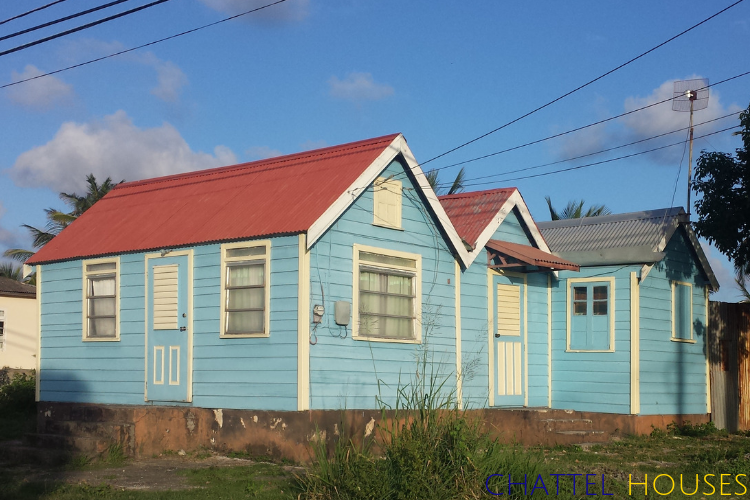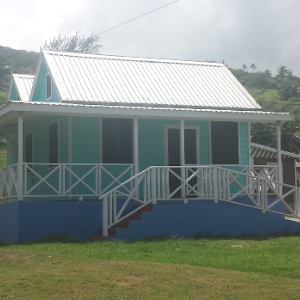The small home movement, also known as the small house movement, is a transition to homes that are smaller than one thousand (1,000) square feet. Homes in North America are large, with a median square footage of two thousand six hundred (2,600) square feet. However, many people are turning to the small house movement and the tiny house movement which encourage and support smaller homes.
Supporters of the small home movement will attest to the many benefits of living in homes that are small. They are easier to maintain, more cost effective to run, and depending on where you live, might be cheaper to construct and outfit with mini luxuries. The simple characteristic of being cost effective is one of the biggest benefits and is tied to reduced consumption and output for some things.
Chattel Houses and the Small Home Movement
The chattel house fits nicely into the small home movement because it shares some of the same characteristics of small homes. These features include how the home is configured, the distances between the rooms, affordability, reduced utility costs and efficiency. The chattel house design can be modified to suit the requirements of different jurisdictions. This means that you can select a modern chattel house plan for your leap into the small home movement.
There are several benefits to joining the small house movement. It might be finance related – you might want a more affordable housing solution for you and your family. You may be in a situation where your budget only allows you to afford a small home. Maybe you’re thinking about downsizing and looking for some reasons why you should join the small house movement. But whenever you make the decision to take that step into small home living, you should be confident and comfortable with your decision.
Effective Home Configuration
One of the biggest advantages of modern chattel houses and small homes is that they are designed with efficiency in mind. The location of the rooms and their proximity to each other are well thought out in an effort to maximise space, but keep the home from being cluttered. An excellent example of an effective layout in a small home is the Cypress Laneway House which was designed by Small Works. This home is built on a small lot, but it includes two bedrooms, one and a half bathrooms, kitchen, living and dining rooms and bonus space.
More Affordable
Whether you are looking at renting, buying or building a small home, you may be able to save money. The cost to rent, build or buy will be cheaper for the home because it’s smaller. Chattel houses are cheaper to build than concrete homes. They are also cheaper to rent. For example, the rental cost for a two bedroom chattel house in Barbados averages $325, whilst the rental cost for a two bedroom concrete house is $600. Many homeowners in Barbados, used chattel houses as their starter homes, which also proved to be an economical home ownership strategy.
Reduced Utility Costs
One of the key features of small homes that can be enjoyed with chattel houses is reduced utility costs. According to the Huffington Post, utilities in homes that are smaller than 1,000 square feet will be less. This means that you will save on electricity, heating and cooling, property taxes, and insurance. Renewable energy systems are also cheaper for smaller homes. Although the initial costs might be high, these systems will eventually save homeowners thousands of dollars on their monthly expenses.
Freedom From Huge Debt
Another advantage of building a small home is that it allows the homeowner to secure an affordable mortgage. There is also the option to construct the home using cash or smaller loans. Building a smaller home does not mean that the home has to lack some of the modern comforts. Many small home plans and designs take advantage of innovative strategies to make the homes cost effective, yet efficient. This financial freedom allows home owners to have more disposable income and less debt.
Easier to be Energy Efficient
As mentioned previously, smaller homes can be more energy efficient. Simply because you have a smaller space, means that your energy needs should be less. This also means that renewable energy systems can be used to generate all of the energy that you need. Solar power can be used to generate electricity, provide heat in cold temperatures as well as heat water. Water filtration systems can also be used to catch rainwater for flushing toilets or irrigation purposes.
Maintenance Costs are Lower
Chattel houses and other types of small homes are easier to maintain and keep clean. Home repairs such as plumbing, faulty windows, faded walls and leaky roofs may be less costly to repair. Smaller homes are easier to keep clean because of the reduced space and less items. Compared to large homes which may require several hours of work, a small home does not. When you have a small space, you should employ smart storage solutions, aim to keep your clutter at a minimum and be very organised.
Small Home Movement
If you are considering joining the small house movement, then you should consider all of the previous points. My research has shown that the popularity of the movement was inspired by a desire to be debt free. Many people have realised that the burden of a mortgage for a larger home is simply too much and can impact their quality of life.
Not everyone can or will want to embrace the small home movement. But many Caribbean people will tell you that this movement is something that they are used to. Caribbean homes, specifically chattel houses, have always been small. But, they have the quiet distinction of being effective and efficient. In fact, the chattel house is proof that simple living in a small home is not a trend but a way of life.
Interested in building a chattel house? Find out the steps that you should take here.
Follow Chattel Houses on Instagram, and get a first hand view of our curated gallery of chattel houses in the Caribbean.





